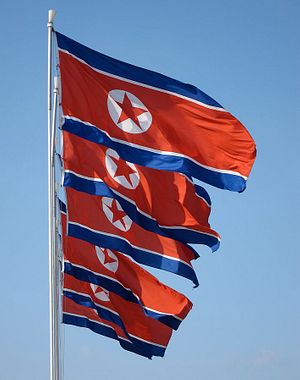South Korea’s Joint Chiefs of Staff (JCS) said on Tuesday that North Korea had fired what appeared to be a submarine-launched ballistic missile (SLBM) from Sinpo, South Hamgyong Province, into the sea off the east coast. If the missile is officially confirmed as an SLBM, the launch would be North Korea’s first SLBM test in two years.
While the JCS has not exactly confirmed the type of missile nor disclosed detailed information about it, experts say that the missile could be a somewhat advanced new missile displayed at the defense development exhibition that North Korea held to mark the 76th anniversary of the ruling Workers’ Party last week. Considering the number of missiles and the location of the test, the missile could be a new advanced type of short-range SLBM.
In recent weeks, Washington and Seoul have consulted with neighboring countries over the diplomatic approach to re-engage Pyongyang in talks. Sung Kim, the U.S. special representative on North Korea issues, is scheduled to meet his counterpart in Seoul this week.
Amid the recent diplomatic movements by Seoul and Washington, Tuesday’s missile launch could be seen as a strategic decision made by North Korea to keep pressuring the South to secure what it wants from the United States, which could be the removal of the “hostile policy.” However, some experts in Seoul have said that the North is test-firing missiles on the basis of what leader Kim Jong Un said during the Eighth Party Congress in January. Kim vowed to strengthen his country’s military capabilities in remarks at the Party Congress.
However, Kim also recently conveyed his message to the U.S. and South Korea that his “arch-enemy is the war itself, not South Korea, the United States or any other specific state or forces” during his address at the defense exhibition. North Korea has been taking a two-pronged strategy toward the U.S. and South Korea, with Kim Yo Jong, the powerful sister of Kim Jong Un, often taking a harder line.
Seoul’s JCS has expressed “deep regret” toward the missile launch, which motivated Kim Yo Jong to make another statement to condemn the so-called “double-dealing standards” of South Korea on the military activities conducted by the two Koreas.
Seoul and Washington have tried to prevent any serious military provocations of the North that could be violations of the U.N. Security Council Resolutions by treating their missile launches as “business as usual.” As Tuesday’s missile was reported to be an SLBM, however, it was inevitable for Seoul to respond in a timely manner – even if its statement of “regret” was exactly what the North had warned against.
North Korea’s state media has not yet published a statement from Kim Yo Jong or other lower-level foreign affairs officials, but it is highly likely that Pyongyang will use Seoul’s response as leverage. The two Koreas have restored their communication hotlines, which North Korea had unilaterally cut off in response to the South Korea-U.S. joint military drills in August. Experts believe that the North would not cut off the hotline again, but statements from Pyongyang denouncing South Korea’s response could be released soon, as a part of their regular playbook following a missile test.
Reportedly, under the surface the agenda for denuclearization negotiations is under negotiation by relevant countries. What is certain, though, is that talks are ongoing between the representatives of the U.S. and South Korea on North Korea
Thus, North Korean officials could have had two motivations in mind for the missile launch: reaffirming its previous demands and preconditions that must be met for any talks, and checking the responses of the United States and South Korea to the latest missile launch to see whether they can actually accept North Korea as a country with legitimate military aspirations.
Since the failed North Korea-U.S. Hanoi Summit in 2019, North Korea’s stance has been clear: It will only return to the negotiating table if the United States makes concessions first. The U.S. State Department has said that it has actually made detailed (but not public) offers to Pyongyang, but there was no official response from North Korea. Kim Jong Un also recently showed his distrust over the Biden administration’s “no hostile” intent remarks.
Still, experts predict that Kim would have no choice but to come up to the table as China puts on the pressure. China wants to expand its leverage on the denuclearization process by making the Beijing Winter Olympics the next breakthrough moment. In a similar way, the 2018 PyeongChang Winter Olympics in South Korea provided significant momentum for the two Koreas to restore their relationship and hold a series of summit meetings in 2018.
In a sense, the missile launch could be seen as “business as usual” based on North Korea’s pattern of launching missiles while Washington and Seoul are consulting on shared issues. As Kim Yo Jong previously demanded that South Korea should not overreact upon its missile launches, Pyongyang may have wanted to see whether Seoul and Washington can actually accept routine missile launches by North Korea.
South Korean President Moon Jae-in’s last proposal – calling for a formal declaration of the end of the Korean War – has attracted attention from the U.S., China, and North Korea. In the lead-up to the Beijing Winter Games in 2022, an end-of-war declaration could function as the main item on the agenda in denuclearization negotiations.

































